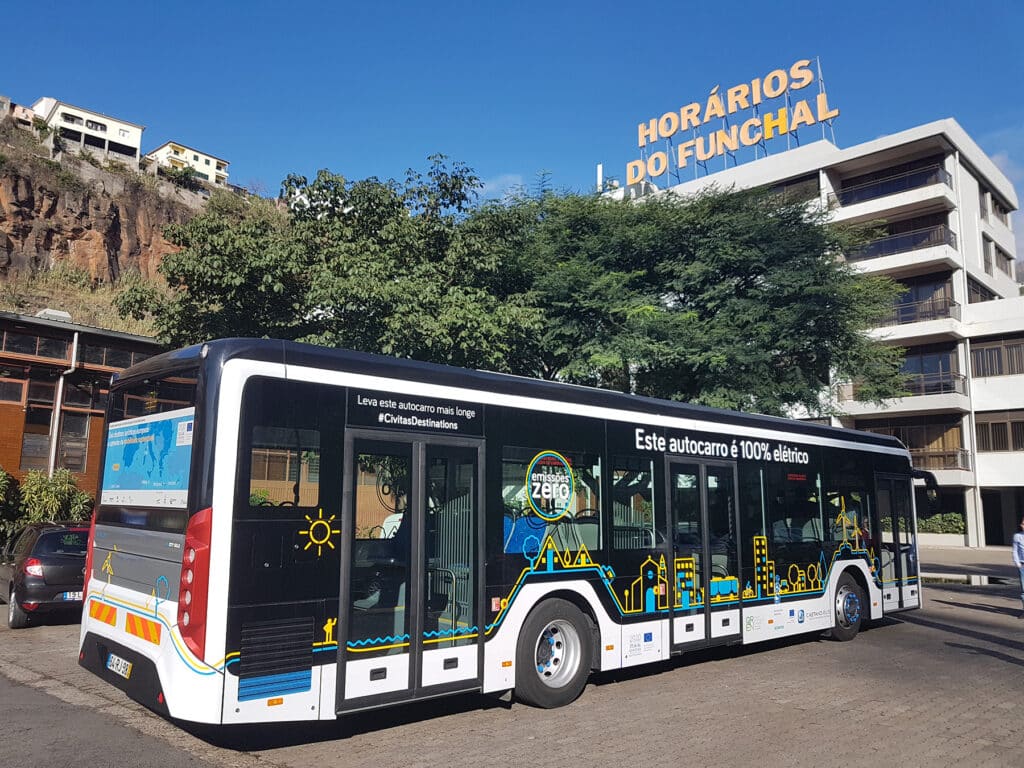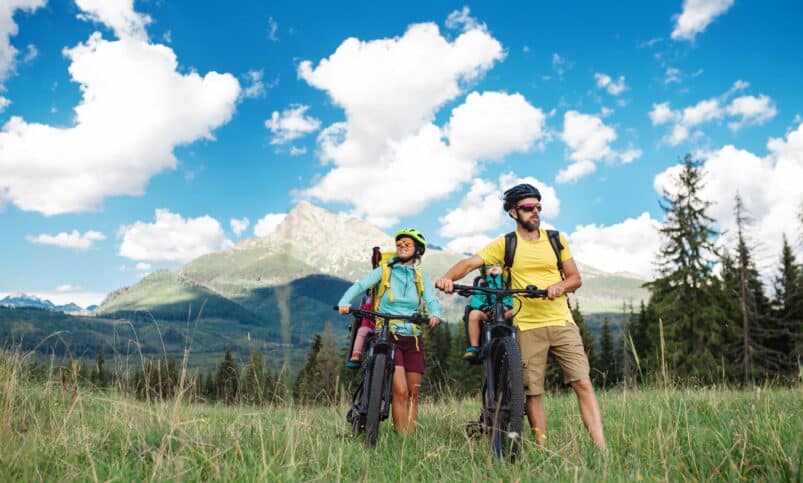With the tourism industry on a high bounce following the lifting of pandemic restrictions, many holiday-goers are looking for ways to travel more responsibly and sustainably. But the annual surge of visitors at resorts and destinations can create environmental headaches for people living in the locality.
Following two years of restrictions and with pent-up demand, millions of Europeans are packing suitcases and flocking to airports to jet off for relaxing getaways. And for many people planning a holiday, responsible travel has become a significant consideration.
Europe’s popular outer islands, from the Aegean, via the Balearics to the Canaries, are some of those places most ready to welcome visitors back. The pandemic decimated their visitor numbers by up to 70%, causing a huge knock-on effect for local economies.
But while tourism may be the mainstay for the islands, like most things, it comes at a cost. An influx of expectant visitors puts pressure on the local environment, transport systems and infrastructure, and creates challenges for the local community also.
Sun-kissed
On sun-kissed Madeira, some 1000km off the coast of Portugal, the holiday season is back in full swing as tourists return to enjoy the island’s stunning beaches and spectacular views. But as visitors weave in out of the island’s hotspots in rental cars, clogging up the local roads, tempers begin to fray.
‘Typically, there are issues of over-crowding, insufficient resources and a lack of integration between tourism and transport,’ explains Funchal-based Claudio Mantero. Mantero is the coordinator of the Civitas DESTINATIONS project, which is attempting to improve links between tourism and transport for island destinations like Madeira.
We’ve shown there is a very clear opportunity for greater cooperation between traditional tourism and local transport
Claudio Mantero, Civitas Destinations
Through the project, Mantero and team studied the impact of tourism on transport systems in Madeira, Gran Canaria, Malta, Elba, Crete and Limassol. Using smart sensors to monitor how and when visitors move about, their work has helped pinpoint what it might take to move people towards greener transport choices.
‘The key issue is reducing the numbers of private cars,’ said Mantero. ‘Currently everything is orientated towards hiring cars and driving around islands. We see multiple opportunities to introduce more sustainable forms of transport which can attract tourists and actually make their experience a better one.’
Bike rental
They piloted some new tech-based trials. In Limassol, for instance, they developed an app providing tourists with easy-to-access information on bike rental and walking tours. Meanwhile, on Elba, they set up an online hub gathering all sustainable transport and public travel options in one place.
Lower-tech solutions are also in play. There are new training programmes for hotel staff on guiding tourists to where they can hire and ride bikes. This includes taking advantage of cross-selling opportunities between different transport options, for example, by offering discounts to tourists taking public transport.
Other measures required deeper changes to transport infrastructures, such as new bus routes to rural destinations with clearer information for tourists about where to jump on and off. In Limassol, bike racks were also fitted on buses to allow tourists to combine visits to these rural locations with some active adventure.
Aboard the e-bus
Hundreds of new electric bikes and a suite of new electric buses for the islands have been purchased and tested as part of the project. This includes the first ever e-bus to arrive in Crete. By demonstrating how efficient and practical they are, the project has helped to unlock new funding for more buses which, in turn, helps to improve air quality.
The main takeaway for Mantero, though, is the importance of improved integration between tourism and transport. He sees an opportunity to embed tourism within sustainable urban mobility plans and to create a blueprint that can be shared beyond the islands.

‘With this project we’ve shown there is a very clear opportunity for greater cooperation between traditional tourism and local transport,’ said Mantero. ‘There’s an appetite among tourists for a greener tourist experience and, through integration, we know we can bring significant benefits for visitors and for residents too,’ he said.
Emblematic issues
A different EU project seeking to shift how we holiday and to improve the sustainability of tourism is SmartCulTour. Working in Belgium, Croatia, Finland, Italy, the Netherlands and Spain, it encourages tourists to leave the hordes behind and visit lesser-known areas that are not typical tourism hotspots.
‘The issue in many places is not actually too much tourism, but rather there’s too much concentration in certain areas,’ says project coordinator Dr Bart Neuts, economist and cultural tourism expert from the Department of Earth and Environmental Sciences at KU Leuven in Belgium.
Scenes of cruise ships that until recently were allowed to sail into the heart of old Venice, tourist buses lining the streets of Barcelona or umbrella-led walking groups touring Paris, all trying to tick off the same cultural sights, are emblematic of the issues that certain areas face.
A narrow view of what constitutes cultural heritage dominates people’s travel choices, at the expense of lesser-known attractions.
‘Our main goal is to open up tourism to rural peripheral regions – areas which we know could benefit from greater visitor numbers,’ said Neuts. ‘To do this, we are trying to broaden how people understand cultural heritage as being not just the famous monuments and artefacts located in Europe’s big cities.’
We are trying to broaden how people understand cultural heritage as being not just the famous monuments and artefacts located in Europe’s big cities
Bart Neuts, SmartCulTour
By working with local communities across six ‘living labs’, the SmartCulTour team seeks to support regional tourism by highlighting hidden gems in an area. Such gems might be tangible, such as buildings or intangible, like people.
The team is working with local groups in Rotterdam to co-design cultural tourism products. Enjoying relatively few visitors historically, Rotterdam has experienced rapid growth in recent years, due to the city’s modern urban image. This vibe is something which the living lab hopes to capitalise on.
Fuller flavour
In the area of Huesca, in the foothills of the Spanish Pyrenees, tourism is geared towards skiing with visitors mostly by-passing the castles, abbeys, and wineries on offer. The Huesca living lab is trying to create a more integrated rural tourism product to give visitors a fuller flavour of the region.
And in far-flung Utsjoki in Lapland – the northern-most municipality in Finland – the SmartCulTour project’s local living lab has spotted an opportunity to expand the season beyond summer when visitors arrive to fish for wild salmon. Introducing people to the indigenous Sámi culture in a culturally sustainable way could be a new way forward for tourism in the region.
Neuts is clear that there are sensitivities and trade-offs with all these ideas and emphasises that these projects are community-driven and inspired.
‘We want to help local stakeholders define new and viable tourist products to help put their areas on the map,’ he said. ‘It’s about working together to identify what’s possible and acceptable.’
Whilst it’s now up to local stakeholders to run with the ideas generated and to market new holidays, Neuts thinks there is a clear potential with today’s tourists looking for more experiential travel.
‘We know tourists will continue to visit the big destinations, but there is a growing number also looking for that different type of experience,’ he said.
If sustainable tourism is supported to grow in locations off the beaten tourist track, it can help these destinations become more economically resilient longer-term. For now though, that process will need both community investment and local political support to develop.
This article was originally published in Horizon: the EU Research and Innovation magazine. Research in this article was funded by the EU. If you liked this article, please consider sharing it on social media.
If you would like to know more about a project such as Civitas Destinations, check out the video below (added by EHT).

